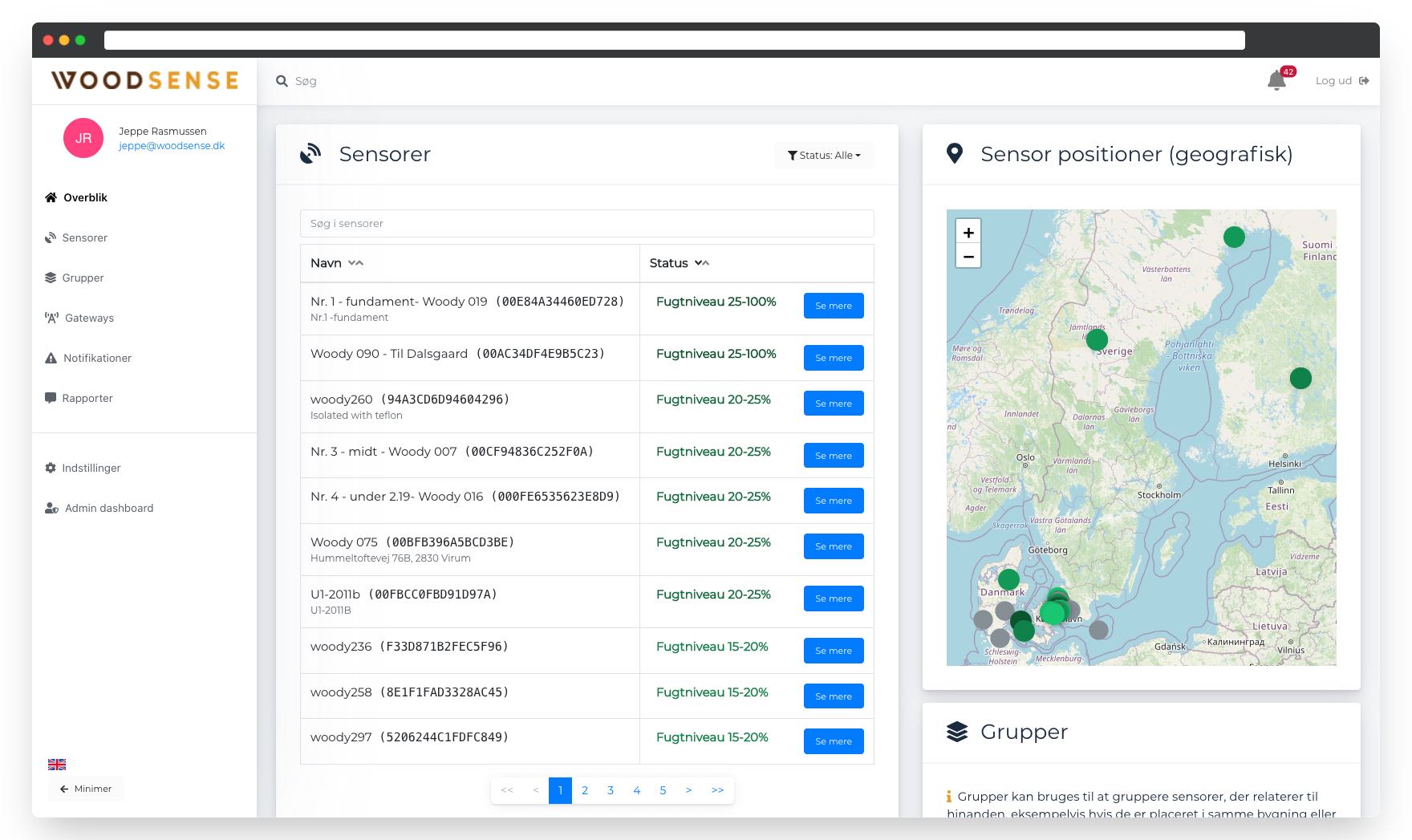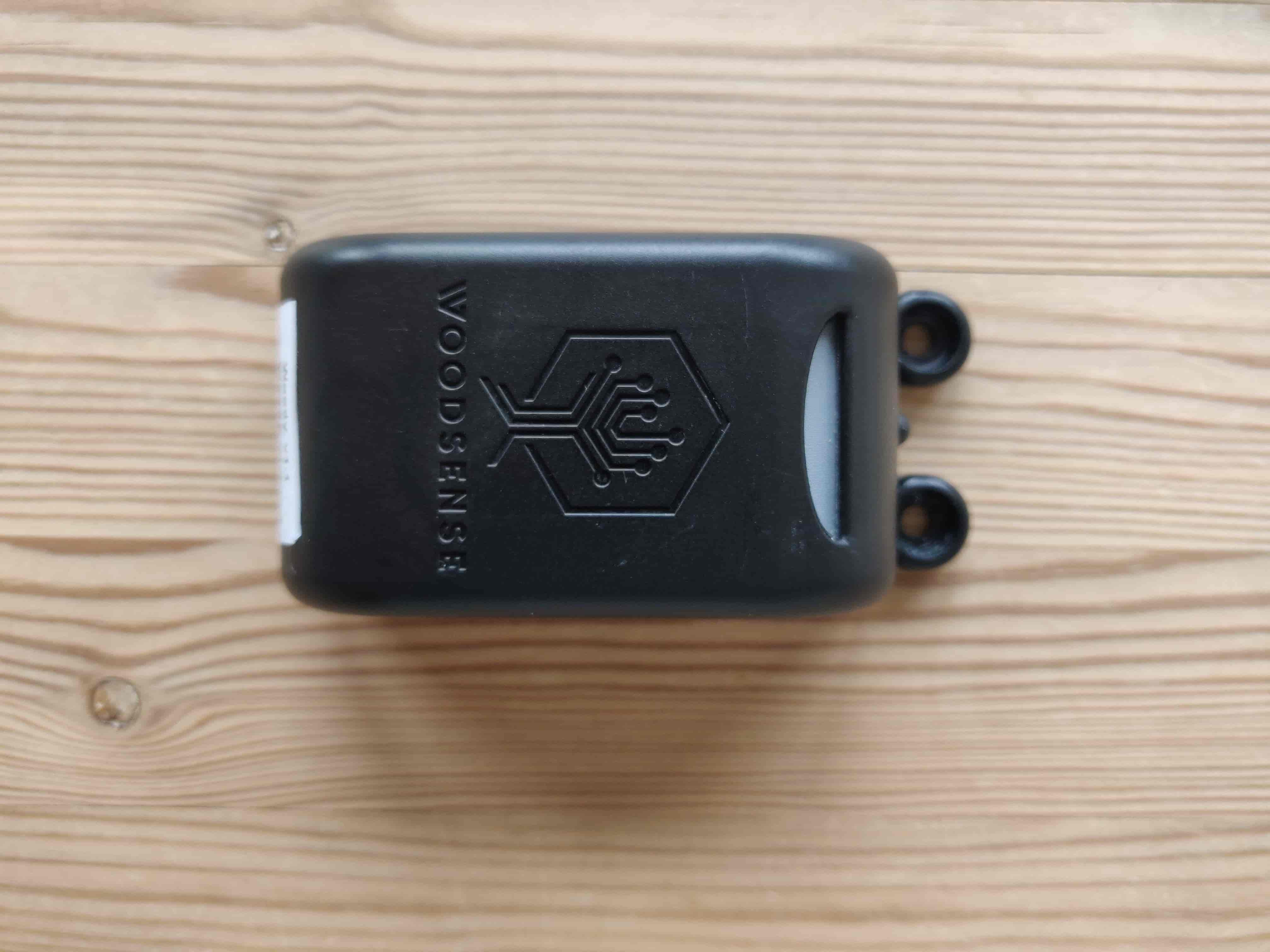
Typical sensor placements
This article explains the different types of sensor placements that we infer using tags and, among other things, base reference values on. For each placement, we explain the associated tags, and reference values, and provide useful information for that particular sensor.
Note if your sensor is placed in a finished construction element then it is important to change the construction phase tag to “After construction” as the sensor otherwise will follow the “During construction” placement.
You can change tags by clicking on the “Tags” tab on the page for your sensor.

Ventilated cold roof cassette at ventilated cavity
Tags
- Primary Element Type: Roof cassettes
- Climate: Outdoor/cold side of the insulation
- Ventilation: Ventilated
- Construction Phase: After construction
Reference value
- Reference value at below 10 °C: 20% MC
- Reference value at above 10 °C: 17% MC
Values are based on Table 6 in SBI-Anvisning 278 for Wood in ventilated roof structures.
Typical reasons for too high moisture content values that exceed reference values are:
- A leak at or close to the sensor
- Moisture build-up can occur around the sensor if there is poor ventilation in the area due to a large distance from ventilation openings or if the area is in shadow.

Cold roof cassette at insulation
Tags
- Primary Element Type: Roof Cassettes
- Ventilation: Unventilated
- Construction Phase: After construction
Reference value
- Reference value at below 10 °C: 17% MC
- Reference value at above 10 °C: 15% MC
Values are based on Table 6 in SBI-Anvisning 278 for Wood below warm roof structures.
Typical reasons for too high moisture content values that exceed reference values are:
- A leak at or close to the sensor can cause high moisture content.
- Poor ventilation of moisture may arise when there is a lack of heat transfer, hindering the removal of moisture from inside the building. This can be attributed to factors like too thick insulation, for instance.


Warm roof
Tags
- Primary Element Type: Warm roof
Reference value
- Reference value at below 10 °C: 30% MC
- Reference value at above 10 °C: 30% MC
The reference values are based on moisture content values above 30% are not possible in an environment at 20 °C if the wood only can absorb moisture from the air. Therefore, moisture content above 30% indicates that the wood has absorbed solid water which can be due to a leak.
Typical reasons for too high moisture content values that exceed reference values are:
- A leak at or close to the sensor.
- Condensation or a leak from a roof drain or pipe.
- During the transition from winter to summer, moisture can travel from below the membrane at the top to the bottom of the roof as the temperature difference between the outside and inside of the roof diminishes.

Ventilated/unused rafter roof
Tags
- Primary Element Type: Rafter roof
- Climate: Outdoor/cold side of the insulation
- Ventilation: Ventilated
- Construction Phase: After construction
Reference value
- Reference value at below 10 °C: 20% MC
- Reference value at above 10 °C: 17% MC
Values are based on Table 6 in SBI-Anvisning 278 for Wood in ventilated roof structures.
Typical reasons for too high moisture content values that exceed reference values are:
- A leak has occurred at or close to the sensor.
- Water is dripping from a pipe due to condensation or a leak.
- Poor ventilation around the sensor due to clogged or incorrectly constructed roof eaves or ridges
- The sensor is located in the shade or where there is little to no sunlight. Northern-facing sensors, for instance, are more likely to have higher moisture content due to the reduced amount of sunlight they receive.
- The sensor is placed in an unventilated “dead zone”. For example, corners in a roof can become dead zones as there is poorer ventilation there.


Warm/used rafter roof
Tags
- Primary Element Type: Rafter roof
- Climate: Indoor/warm side of the insulation
- Ventilation: Unventilated
- Construction Phase: After construction
Reference value
- Reference value at below 10 °C: 17% MC
- Reference value at above 10 °C: 15% MC
Values are based on Table 6 in SBI-Anvisning 278 for Wood below warm roof structures.
Typical reasons for too high moisture content values that exceed reference values are:
- A leak has occurred at or close to the sensor.
- Water is dripping from a pipe due to condensation or a leak.

Inside external walls
Tags
- Primary Element Category: External walls
- Ventilation: Unventilated
- Construction Phase: After construction
Reference value
- Reference value at below 10 °C: 17% MC
- Reference value at above 10 °C: 15% MC
Values are based on Table 6 in SBI-Anvisning 278 for Wood inside facades.
Typical reasons for too high moisture content values that exceed reference values are:
- A leak has occurred at or close to the sensor.
- Water is dripping from a pipe due to condensation or a leak.
- Water originating from a leak in the roof is moving down through the walls.
- Moisture in indoor air can condense within the external walls when heat is transferred to the outside due to a faulty or leaky vapor barrier or inadequate sealing around joints.


Outside external walls (exposed to outdoor conditions)
Tags
- Primary Element Category: External walls
- Ventilation: Ventilated
- Construction Phase: After construction
Reference value
- Reference value at below 10 °C: 20% MC
- Reference value at above 10 °C: 17% MC
Values are based on Table 6 in SBI-Anvisning 278 for Wood outside facades.
Typical reasons for too high moisture content values that exceed reference values are:
- The sensor's facade element may naturally become wet during rain.
- If the sensor is placed close to the ground, water may splash up onto the facade from a hard surface.
- Cracks or loosely sealed joints in the facade can allow water to penetrate and moisten elements behind the facade.
- Poor ventilation can lead to a build-up of moisture content around the sensor, which can cause an increase in the measured moisture content.


Slabs
Tags
- Primary Element Category: Slabs
- Climate: Outdoor/cold side of the insulation
- Ventilation: Unventilated
- Construction Phase: After construction
Reference value
- Reference value at below 10 °C: 17% MC
- Reference value at above 10 °C: 15% MC
Values are based on Table 6 in SBI-Anvisning 278 for Wood inside facades that is estimated to be the closest match.
Typical reasons for too high moisture content values that exceed reference values are:
- A leak at or close to the sensor
- If the slab is near the ground, a faulty or leaky vapor barrier can allow moisture from the ground to seep up into the building's structure.
- If the slab is located above a cold basement, heat transfer can lead to condensation and high moisture content.
- Water is dripping from a pipe due to condensation or a leak.


Interior walls
Tags
- Primary Element Category: Interior walls
- Climate: Indoor/warm side of the insulation
- Ventilation: Unventilated
- Construction Phase: After construction
Reference value
- Reference value at above 10 °C: 12% MC
Values are based on Table 6 in SBI-Anvisning 278 for Wood indoors. It is not expected indoor temperatures will be below 10 degrees.
Typical reasons for too high moisture content values that exceed reference values are:
- Water is dripping from a pipe due to condensation or a leak.
- Water originating from a leak in the roof is moving down through the walls.
During construction
Tags
- Construction Phase: During construction
Reference value
- Reference value at below 10 °C: 20% MC
- Reference value at above 10 °C: 20% MC
Values are based on Table 5 in SBI-Anvisning 278 for Exterior works - Structures. This reference value focuses on the element that does not become too wet during construction. In some cases, it is allowed the element exceeds this threshold. If this is the case you can ignore any alarms or toggle alarms off for sensors with this reference value.
Typical reasons for too high moisture content values that exceed reference values are:
- The construction element has become wet during transport.
- Moisture infiltration due to missing, insufficient covering of building elements on site.
After construction
Tags
- Construction Phase: After construction
Reference value
- Reference value at below 10 °C: 20% MC
- Reference value at above 10 °C: 17% MC
Values are based on maximum value in Table 6 in SBI-Anvisning 278. We do not recommend to use the reference values from “After Construction” as it is a default value if no other tags are provided.
Typical reasons for too high moisture content values that exceed reference values are:
- A leak has occurred at or close to the sensor.
Default
Tags
No tags
Reference value
- Reference value at below 10 °C: 50% MC
- Reference value at above 10 °C: 50% MC
If no tags are provided, we provide very high a reference value as we do not know the usage of the sensor. It could, for example, be for testing purposes.
Default outdoor ventilated
Tags
- Climate: Outdoor/cold side of the insulation
- Ventilation: Ventilated
- Construction Phase: After construction
Reference value
- Reference value at below 10 °C: 20% MC
- Reference value at above 10 °C: 17% MC
Values are based on Table 6 in SBI-Anvisning 278 for Wood outside facades. We recommend customers also provide primary element category and primary element type tags as it provides more precise information.
Typical reasons for too high moisture content values that exceed reference values are:
- A leak has occurred at or close to the sensor.
- Poor ventilation around the sensor leads to the accumulation of moisture.
Default indoor unventilated
Tags
- Climate: Indoor/warm side of the insulation
- Ventilation: Unventilated
- Construction Phase: After construction
Reference value
- Reference value at below 10 °C: 17% MC
- Reference value at above 10 °C: 15% MC
Values are based on Table 6 in SBI-Anvisning 278 for Wood inside facades. We recommend customers also provide primary element category and primary element type tags as it provides more precise information.
Typical reasons for too high moisture content values that exceed reference values are:
- A leak has occurred at or close to the sensor.



